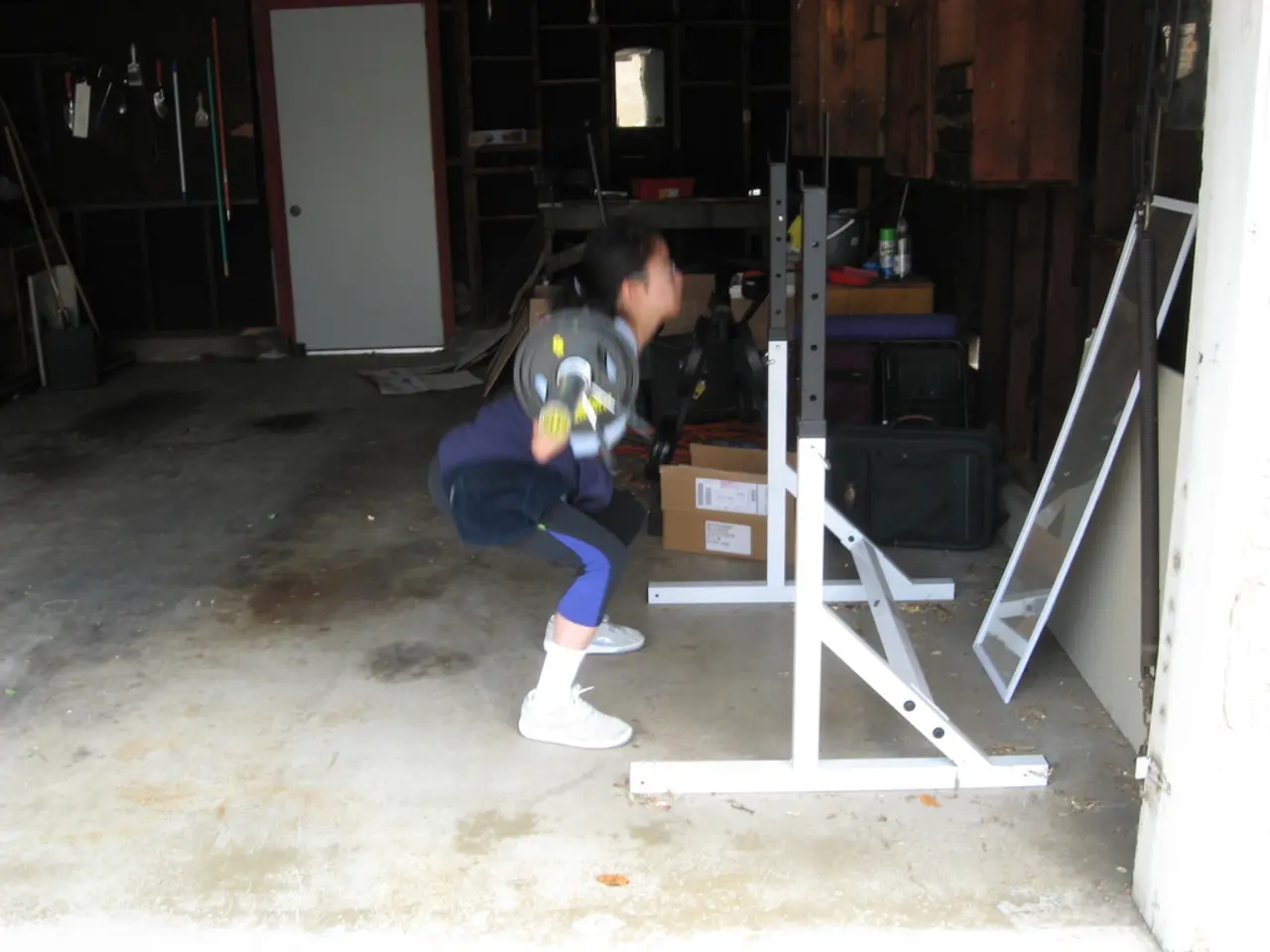The Comparison between High Weight and High Rep Exercises
In the world of powerlifting and resistance training, a new perspective on muscle growth is gaining traction. A debate that has been trending for approximately 15 years suggests that the traditional advice on the relationship between weight and hypertrophy may not be entirely accurate.
Layne Norton, a powerlifter and PhD, and Stuart Phillips, a professor in the department of kinesiology at McMaster University, are among the leading voices challenging the common belief that heavier weights produce better results for muscle growth.
According to Norton, middle rep ranges, which are heavy enough to reach close to failure but not so heavy as to be intimidating and can be completed in under a minute, are beneficial. He also states that heavier weights do not necessarily produce better hypertrophy results.
Phillips' research shows that low-load training, when taken close to failure, shows similar results as heavy weights taken to failure in enhancing hypertrophy (muscle growth) and muscle protein synthesis. This means that lifting lighter weights to failure can be as effective for muscle growth as heavy weights taken to failure, provided that the sets are performed with high effort and taken close to muscular failure.
The critical factor for hypertrophy is proximity to failure and total training volume rather than the load alone. Research shows that hypertrophy can be achieved with a wide range of loads, from very light weights (with 25–30 reps) to heavy weights (with 6–12 reps), as long as the muscle is pushed close to failure during the set.
However, lighter loads require higher repetitions and often greater overall volume (more sets) to equate the workload of heavy lifting, which can make sessions longer or more tiring. Training close to failure means having only 1–2 reps left in the tank; stopping too early reduces hypertrophic benefits significantly.
Norton still believes focusing on middle rep ranges for building muscle is good advice, even though the scientific reasoning was incorrect. He suggests that combining both heavy and lighter load training, often referred to as "powerbuilding" or mixed periodization, is common. Heavy lifting improves strength and neural adaptations that support long-term growth, while higher volume and moderate reps favor hypertrophy.
Progressive overload, a concept for making gains on the power rack, does not always mean adding weight. One way to "progress" in the power rack is not by necessarily increasing the weight, but by other means.
In summary, when sets are taken close to failure, low-load high-rep training can produce comparable muscle growth to heavy-load low-rep training. The choice between them can depend on individual preference, goals, recovery capacity, and training variety. Both methods benefit from sufficient weekly volume and training intensity near failure.
[1] Phillips, S. M., Van Loon, L. J., Aarsland, P., Casserly, T., & Tang, J. E. (2017). Dietary protein requirements and exercise: translation betweenathletes and healthy young adults. Journal of Sports Sciences, 35(11), 1123–1131.
[2] Schoenfeld, B. J., Grgic, J., Ogborn, D., & Krieger, J. W. (2016). Differences in muscle and strength adaptations between high-load and low-load resistance training: a systematic review and meta-analysis. Sports Medicine, 46(11), 1769–1787.
[3] Schoenfeld, B. J., Aragon, A. A., Wilborn, C. D., Urbina, S. M., Campbell, B., & Wolfe, R. R. (2017). International Society of Sports Nutrition position stand: resistance training and muscular hypertrophy. Journal of the International Society of Sports Nutrition, 14(1), 1.
[4] Schoenfeld, B. J. (2010). The mechanisms of muscle hypertrophy and their application to resistance training. Journal of Strength and Conditioning Research, 24(10), 2857–2872.
- In the realm of health-and-wellness, a growing number of scholars question the conventional wisdom linking weight and muscle growth in fitness-and-exercise, especially in sports like powerlifting.
- The manual by Layne Norton, a powerlifter and PhD, and research by Stuart Phillips from the department of kinesiology at McMaster University argue that middle rep ranges, not just heavier weights, can foster muscle growth effectively.
- Proximity to failure and total training volume, rather than load alone, have emerged as critical factors for weight-management and muscle growth, as per science studies like those by Phillips, Schoenfeld, and others.
- Adopting a shopping strategy that includes both high-load, low-rep and low-load, high-rep exercises, also known as powerbuilding or mixed periodization, could be a viable approach for optimizing muscle growth and strength, according to experts like Norton.
- Hybridizing styles such as fashion and scientific approaches, much like combining heavy and lighter load training methods, can pave the way for a more holistic understanding of muscle growth and wellness.




